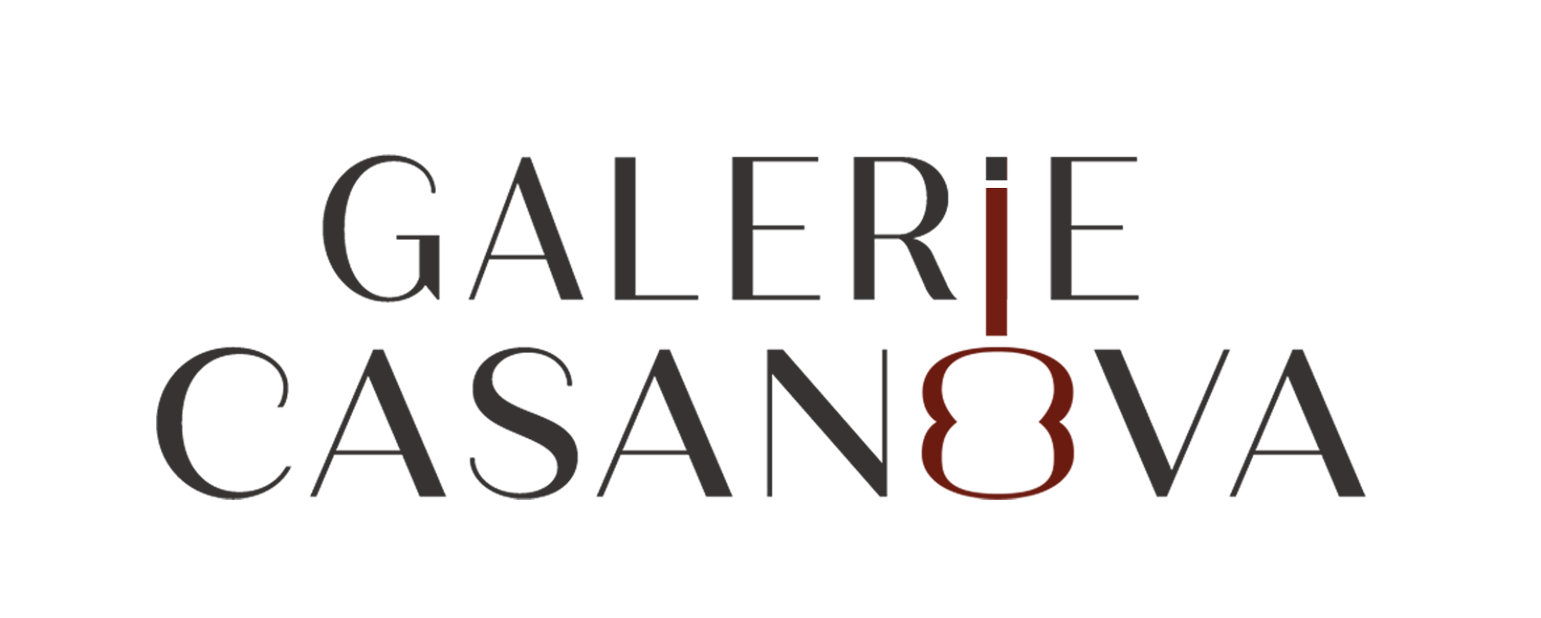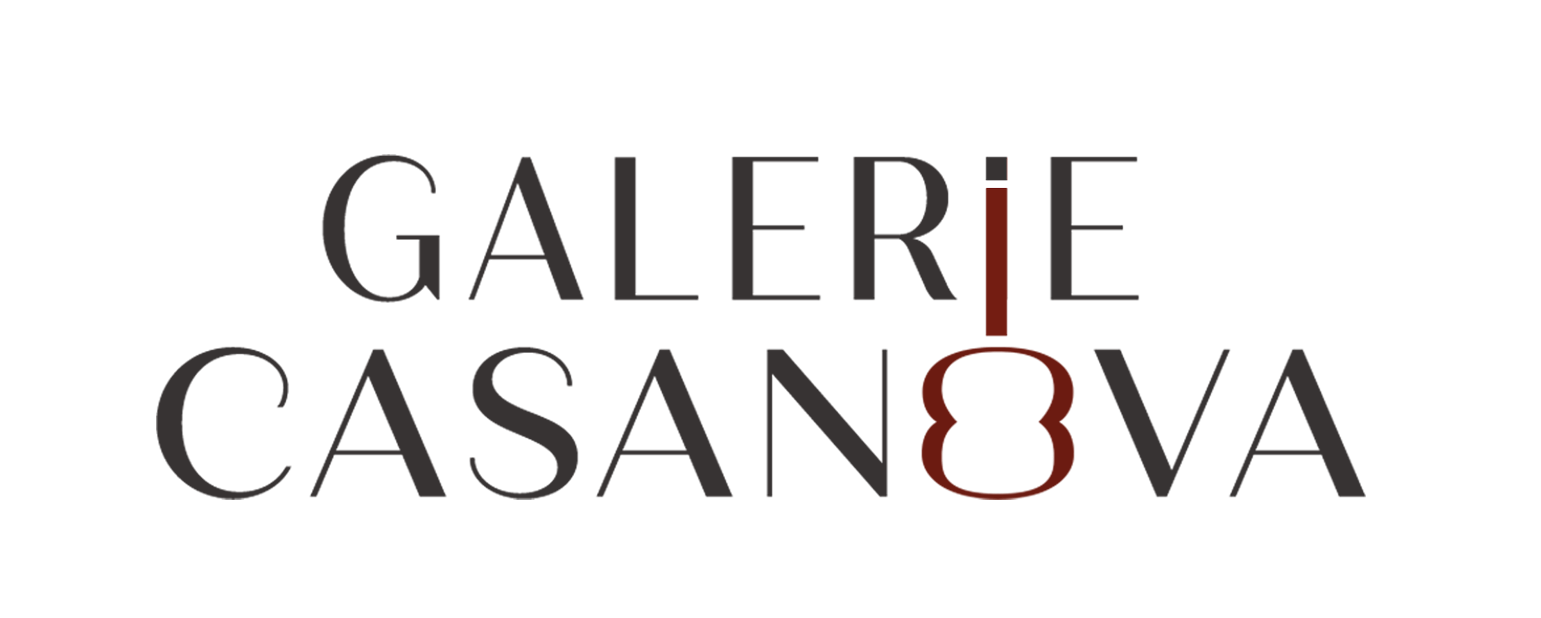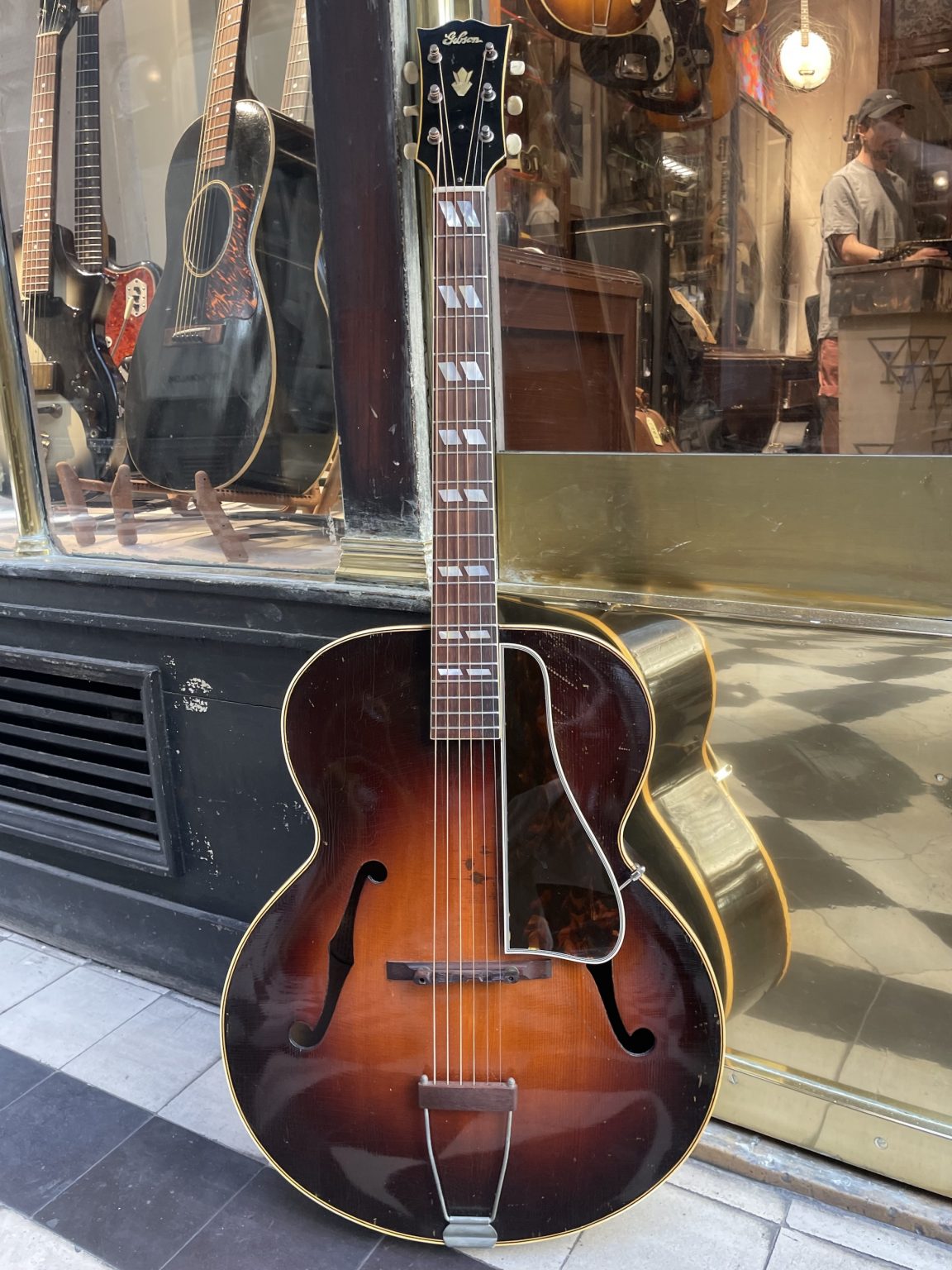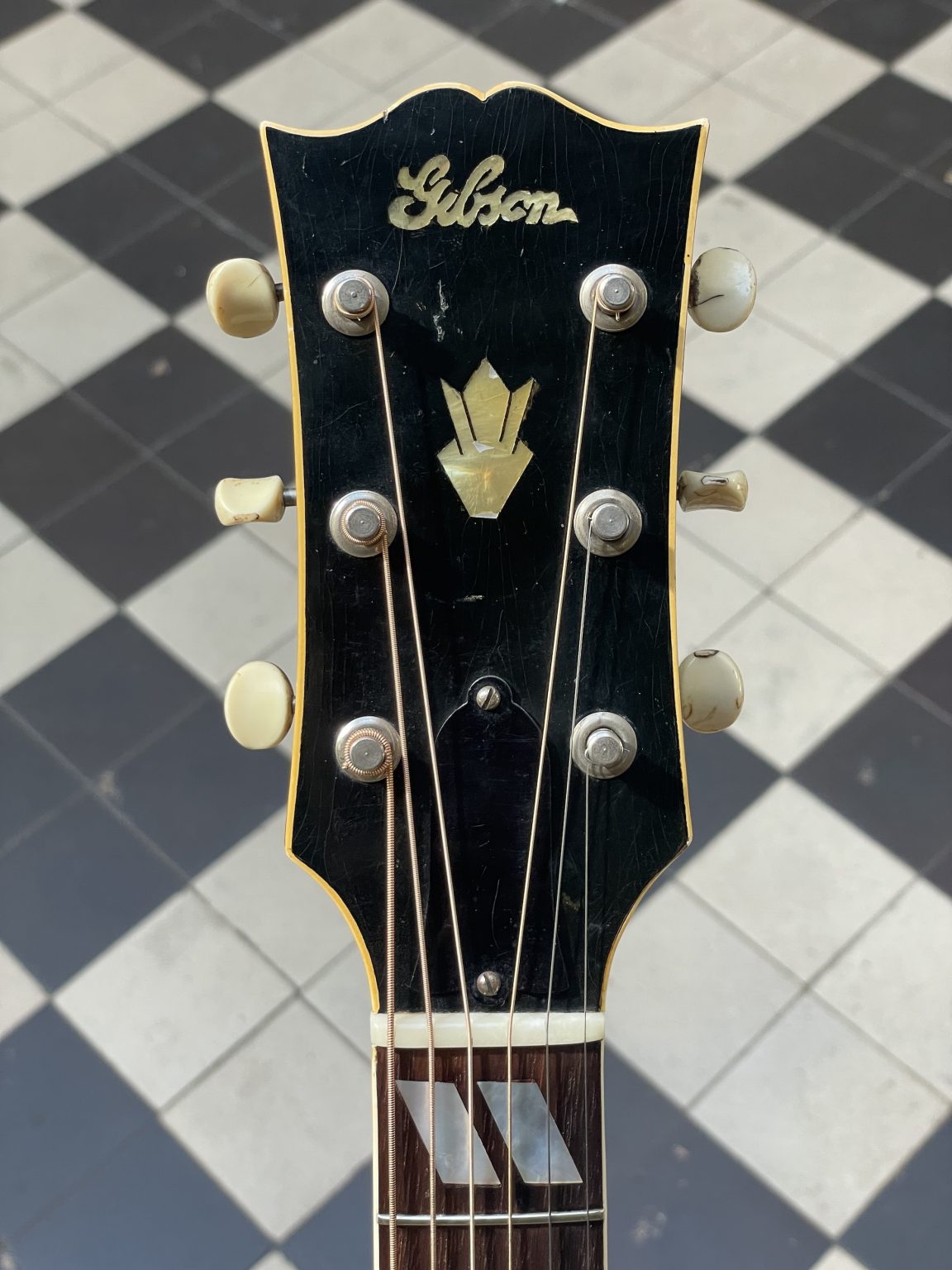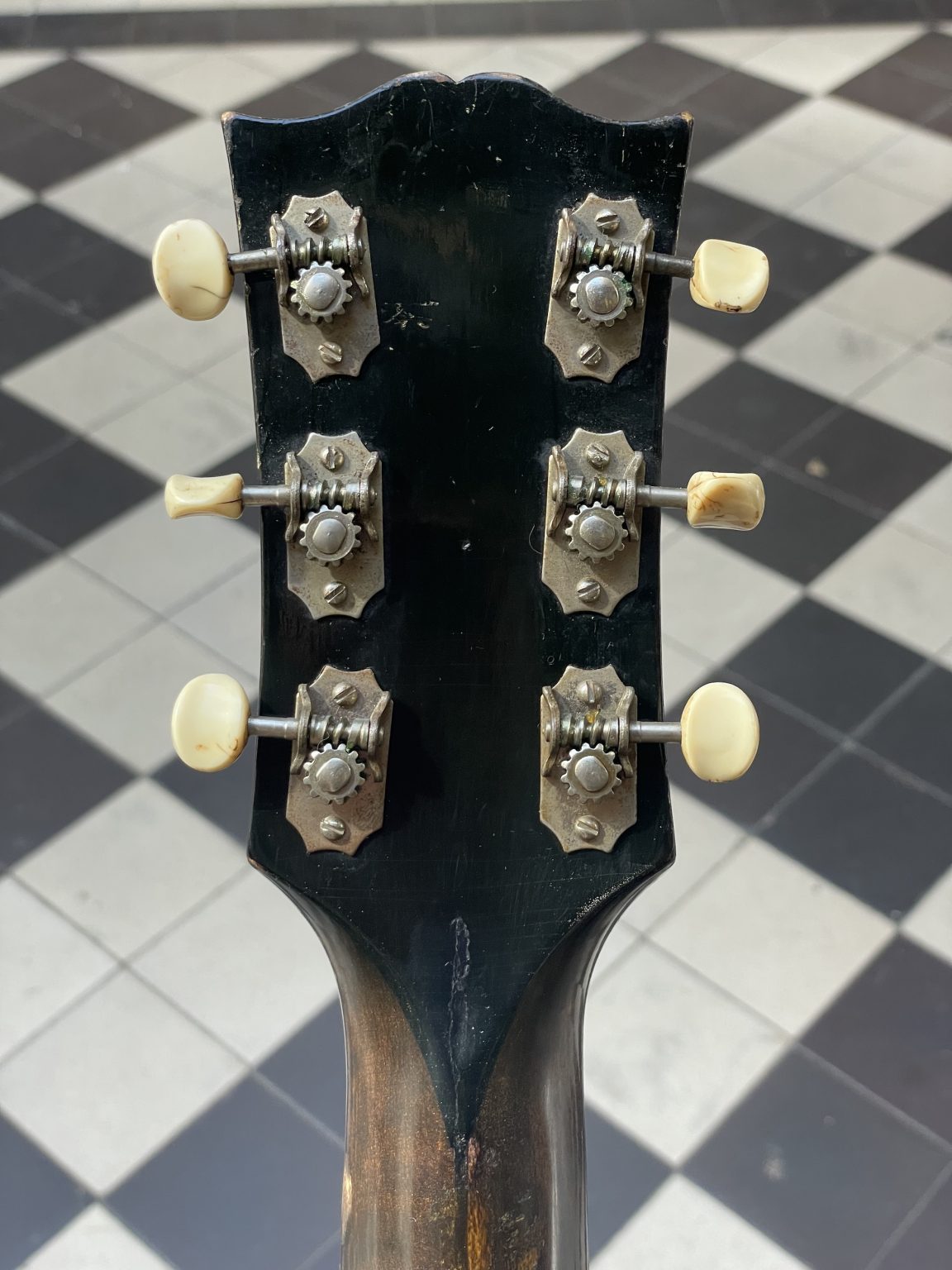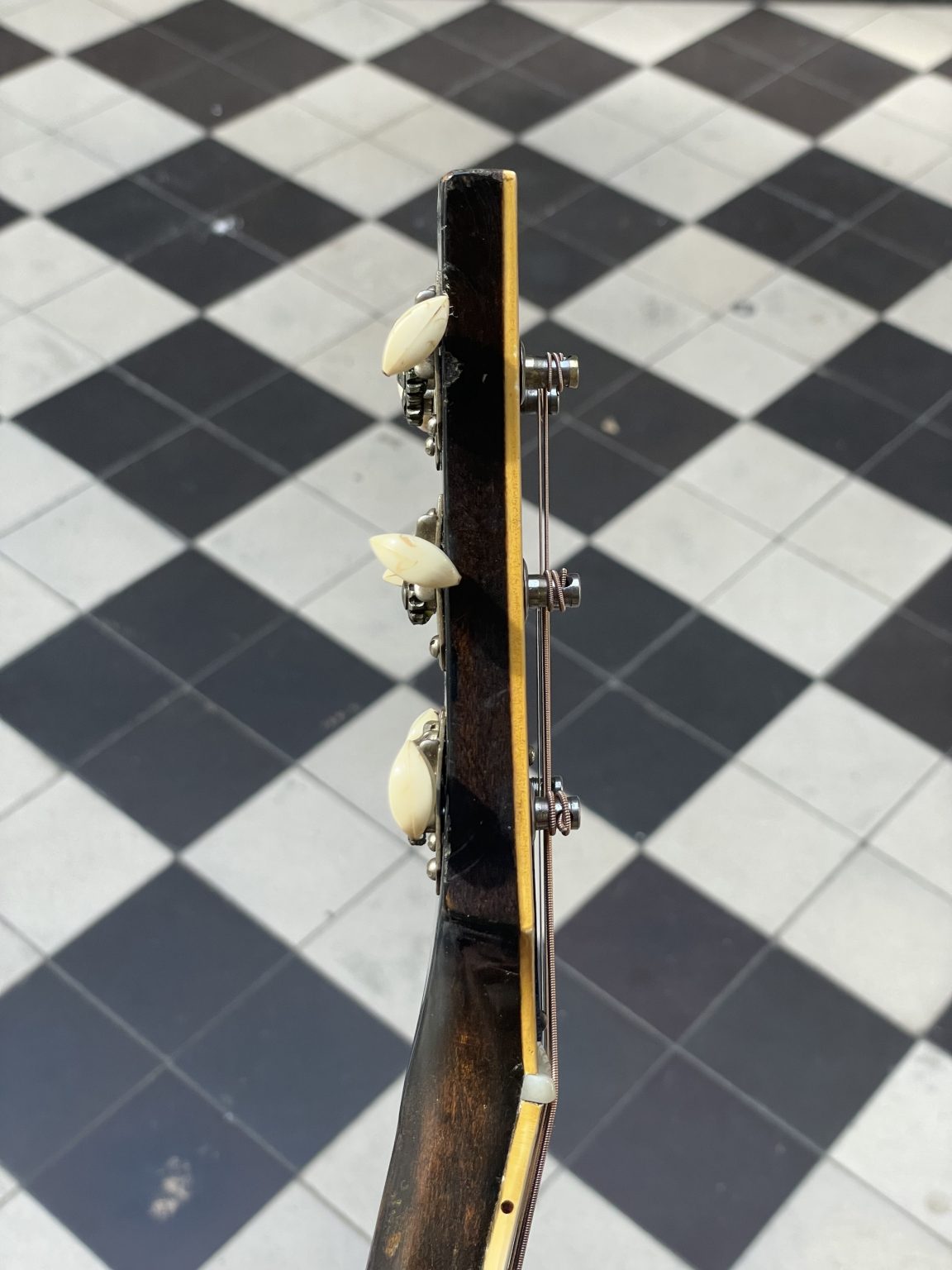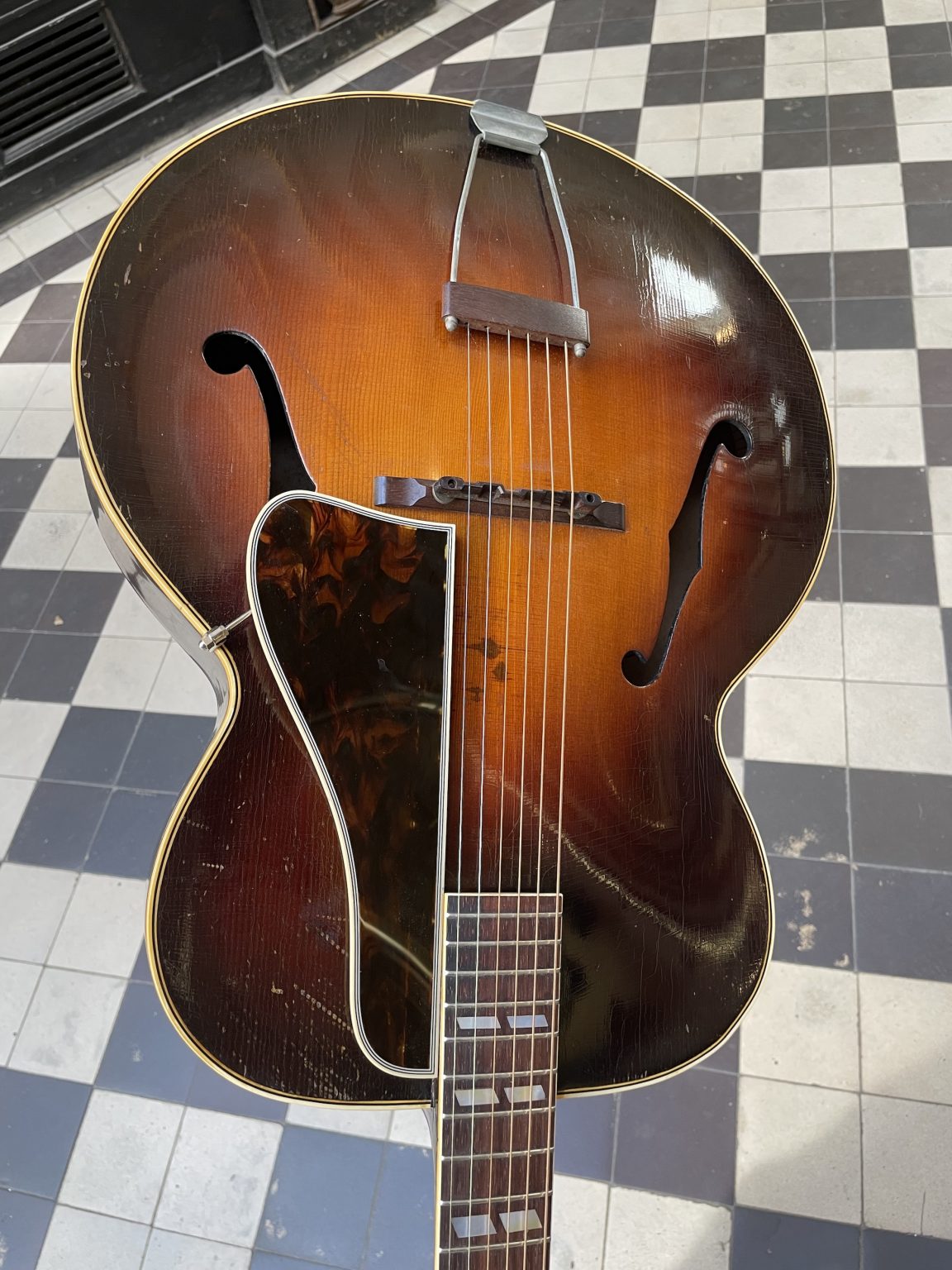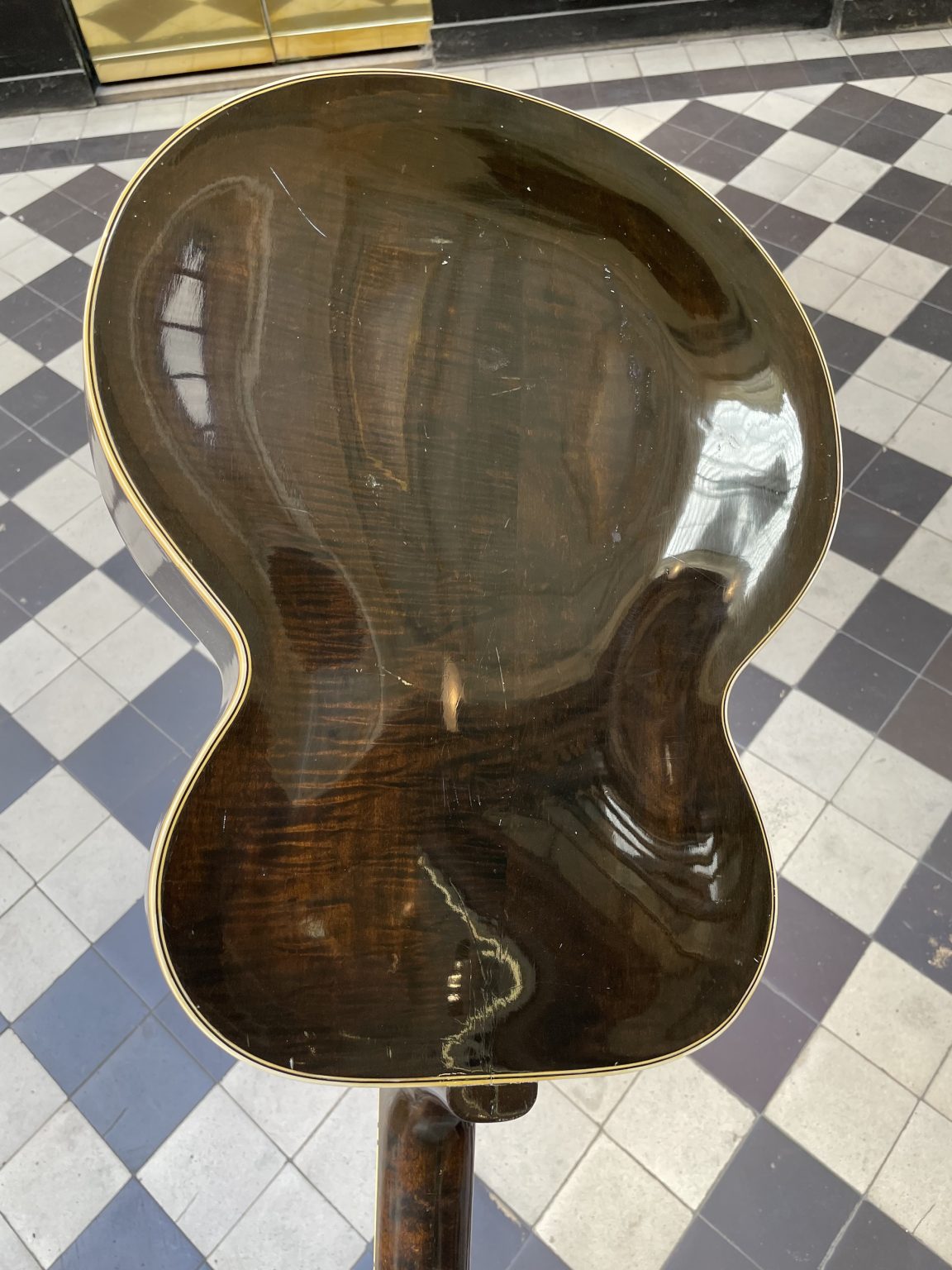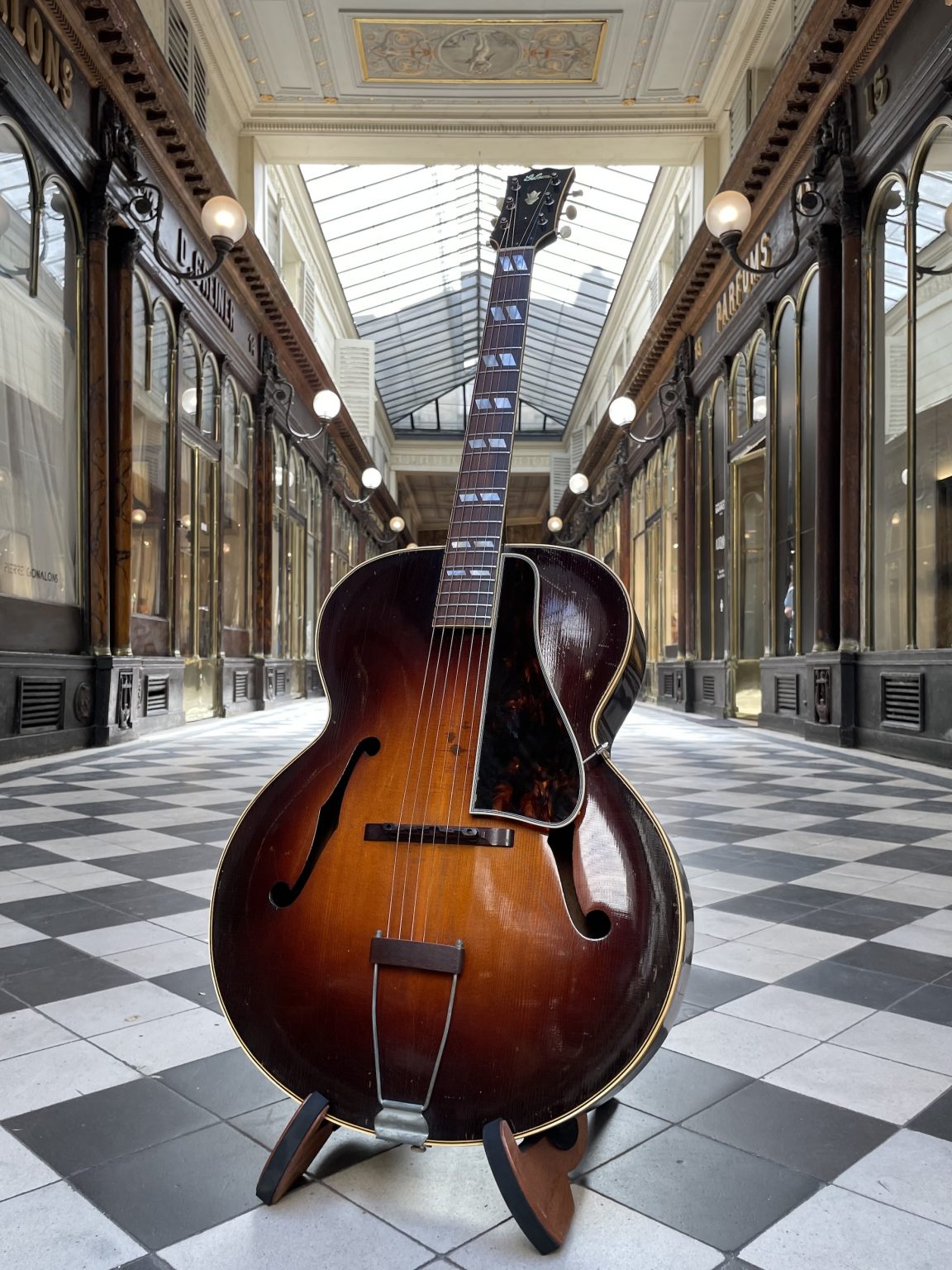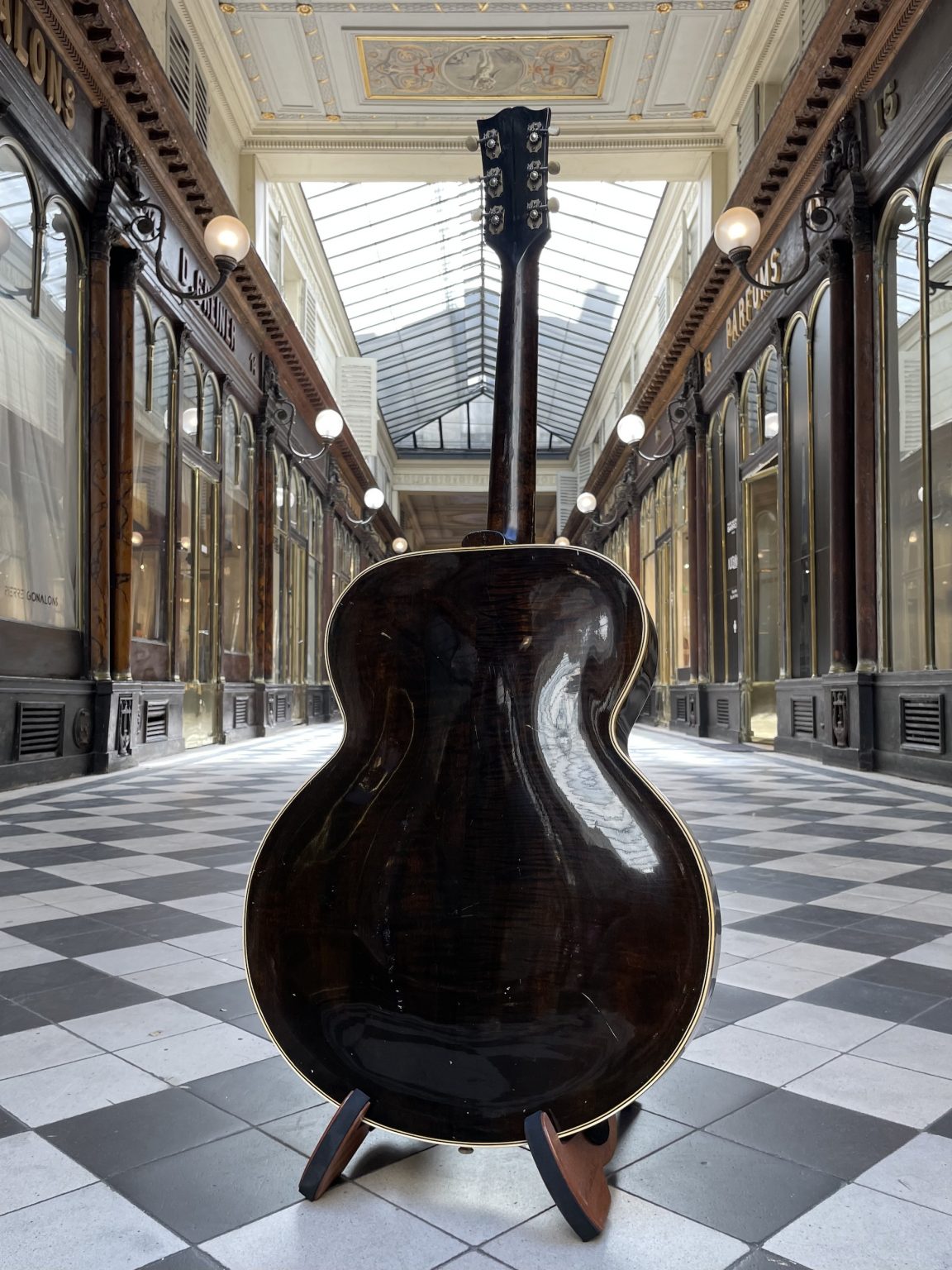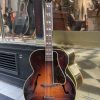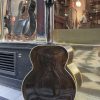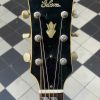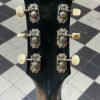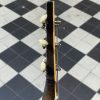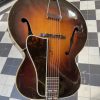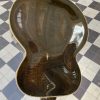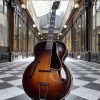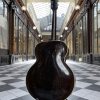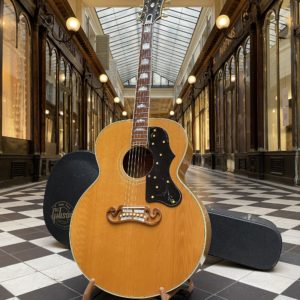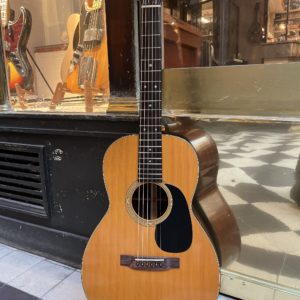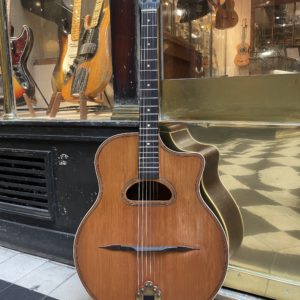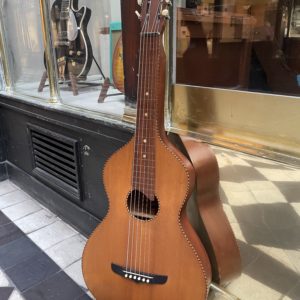1944 GIBSON L-7
€9.800,00
In stock
The prices indicated correspond to the price in the case of payment in-store or by bank transfer. In the case of payment by credit card via the website, a processing fee of [3.25% + €0.25]* will be applied to the total amount of the basket, including delivery costs.
Gibson L-7 from 1944, in very good condition, both preserved and playable.
This L-7 was built in the heart of the wartime era and is one of the few high-end instruments to have left the Kalamazoo factory at a time when regular guitar production was severely disrupted by the company’s reorganization around the war effort. The L-7 was Gibson’s most affordable 17-inch archtop guitar at the time, and had already established itself as a staple since its introduction in the early 1930s. In fact, the instrument offers exactly the same qualities as the L-5, the flagship 17-inch archtop model, for about half the price—yet the differences between the L-7 and L-5 are essentially limited to aesthetics, their finishes, and hardware: the former is understated and classic, the latter is flashy and luxurious. The guitar shown here features a solid spruce top, figured maple back and sides, a three-piece maple neck topped with an Rio rosewood fingerboard, and an adjustable rosewood bridge… a superbly selected and crafted set of woods to create a high-quality instrument!
One characteristic specific to this era is the tailpiece crossbar, which is made of wood rather than metal as is usually the case. Indeed, restrictions imposed by the American government on the use of steel forced instrument makers to find substitute materials and methods. For the same reason, some Gibson guitars built during the war lacked a truss rod—a metal rod allowing the neck to be adjusted—and were fitted with a very thick neck to withstand the tension of the strings. We also note the presence of the old Gibson logo on the headstock of the instrument: in the so-called script style, the cursive lettering is cut from mother-of-pearl and inlaid in the headstock veneer. This element was replaced in 1948 by the new silkscreened version of the logo, dubbed block script – the one that we still find, with a few variations, today! The Sunburst on the soundboard has retained a beautiful shine and a still pronounced gradient going from brown to orange-yellow. The back, somewhat marked by use, as well as the sides are finished in a translucent dark brown varnish allowing the patterns of the maple to appear underneath. As is often the case, the original pickguard having disintegrated, we made a copy of the original. Aside from this, the guitar remains in excellent original condition, including its tailpiece and Kluson tuners, and has been fully prepared for playability in our workshop—work that included a complete refret with correct-spec wire, new frets levelled, crowned and polished, the crafting of a new bone nut, and the adjustment of all setup elements to achieve low action and accurate intonation.
Sold in a modern hardshell case.
Related products
-
2001 GIBSON SJ-200
€5.480,00Original price was: €5.480,00.€4.950,00Current price is: €4.950,00.
